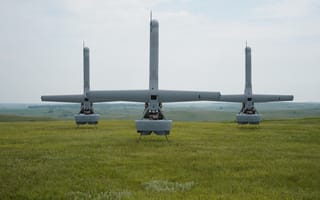From the very first demonstration, the Shield AI product team knew they were making an impact.
Technical Director Brian Marchini stood in front of a crowded audience, operating three aircraft in front of him. As he was trying to explain what was going on, he realized that the audience couldn’t see the screen over his shoulder.
“They were having trouble hearing me, so I quickly assigned the team of V-BATs a new task, stood up, turned around, moved out of the way of the screen and started explaining what the aircraft were doing.”
What was amazing about this moment was, first, the demonstration of Shield AI’s V-BAT — what the company calls the “future of next-generation unmanned aircraft systems.” The large AI drones stand straight up like a rocket with wings stretching out at the bottom and a ducted propeller at the base.
“V-BAT is a group 3 vertical takeoff-and-landing unmanned aircraft, which won the U.S. Navy and Special Operations Command’s Multi-Mission Tactical UAS Increment 2 Program of Record,” said Senior Product Manager Inderraj Singh Grewal. “Its unique design and controls allow it to take off and land in high winds on crowded flight decks aboard moving vessels, with landing zones as small as 12 square feet.”
The second remarkable part of this demonstration was, perhaps more importantly, when Marchini set the AI pilot to run all of the drones at once.
“At this point, I had been using the system for many weeks during tests leading up to the demo, so I didn’t really think twice about doing this,” said Marchini. “I had full confidence that the AI pilot was going to safely continue its tasking without me being physically at the controls.”
One of the audience members pointed out that Marchini was briefing the group while actively operating a team of aircraft. “That was a pretty cool moment,” he noted.
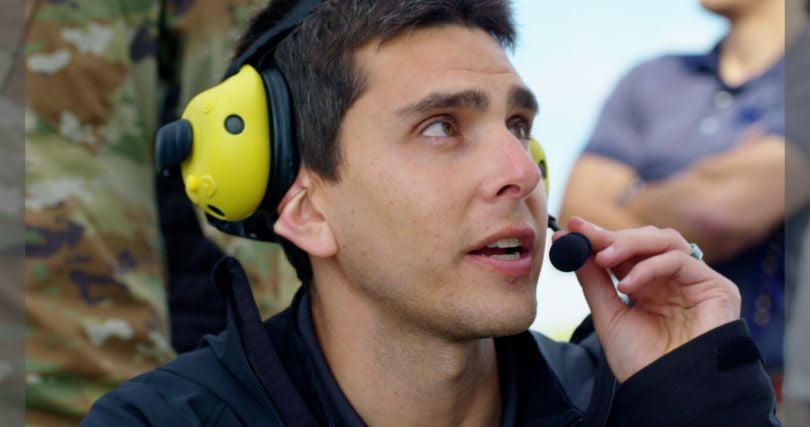
The demonstration was meant to highlight Shield AI’s newest product — V-BAT Teams, which is an AI pilot program that allows a group of unmanned aircraft to autonomously sense and react to one another, enemy aircraft and the environment. V-BAT Teams is built upon Shield AI’s Hivemind that enables teams of intelligent aircraft to operate autonomously in high-threat environments on the edge, without the need for remote operators, command inputs or GPS.
“This design allows us to leverage common components such as perception and cognition subsystems which are extensible to other platforms, while still developing behaviors and sensor effects which are optimized for V-BAT,” said Marchini.
The product launch gives Shield AI an unparalleled advantage in the market. Grewal noted that “the military of the future will deter adversaries through teams of thousands of AI-enabled V-BATs that can patrol wide areas of the globe.”
He went on to explain how V-BAT Teams is the first step on that path. The product launch will soon allow groups of V-BATs to execute coordinated actions with just one pilot controlling them, compared to the typical ratio of one or two pilots per aircraft, even when flying unmanned missions. This level of capability hasn’t been possible in the military until now.
“We’re working towards a solution where one operator can task a team of agents to accomplish various missions in safe and automated ways, including streamlined launch and recovery,” said Senior Engineer of Hivemind Cristina Sorice. “It’ll be much cheaper and easier to send assets where they’re needed, and there will be less risk to human life.”
WHAT SHIELD AI DOES
Shield AI is an aerospace tech company that is developing an AI pilot for unmanned aircraft. The AI is built on what the company calls “Hivemind.” Hivemind enables intelligent teams of aircraft to perform missions ranging from room clearance, to penetrating air defense systems and dogfighting F-16s.
“Everything we do is a team effort,” added Singh Grewal. “Shield AI’s success is predicated on a culture of hard work, diligence and mission alignment. I am lucky to be surrounded by teammates that uphold a standard of excellence and challenge me to be constantly improving.”
Built In sat down with these three members of the Shield AI team to learn more about the recent product launch.
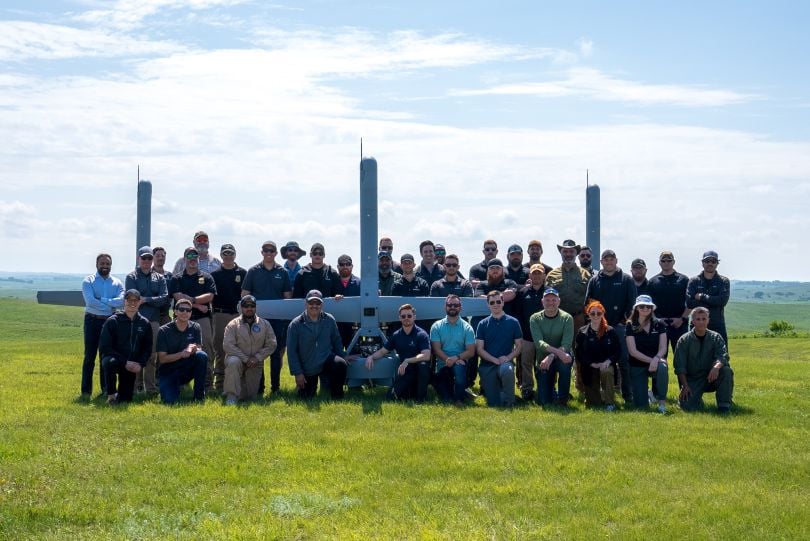
What obstacles did you encounter along the way? How did you successfully overcome them?
Marchini: Human factors were one of the biggest challenges we encountered during the development of V-BAT Teams. For many years, unmanned aircraft systems have been flown in a one-to-one or even one-to-many aircraft-to-operator ratio. This paradigm formed longstanding habits of operators being intimately involved with all aspects of unmanned aircraft system command and control.
When we inverted this ratio and asked one operator to oversee multiple aircrafts, it required their role to shift from pilot to mission manager. It also changed the commands from “fly to this location and look at this point on the ground, then fly to another location and look at another point” to “search this area for X and let me know when you find it.” This paradigm shift required a major overhaul of our ground station user experience to focus on multiagent tasking and required many iterations of testing and user feedback to dial in.
Grewal: V-BAT Teams comprises multiple hardware and software systems that have complex interdependencies, which makes for a challenging development environment.
Figuring out the correct order of engineering development is the hardest question. It is a costly time and schedule impact if you build around the wrong components. This means rigorous early evaluation of any new components that will go into the end product. We had to pivot a number of times until we settled on the correct architecture. The team has to be agile but thorough.
What tools or technologies did your team use to build the product?
Sorice: Our AI software is built upon Shield AI’s custom middleware, EdgeOS. My team uses EdgeOS and associated tooling to develop and test our software in C++ and other common test frameworks like Google Test. Additionally, we do our integration testing with some Shield AI custom testing frameworks and simulation environments for both software-in-the-loop and hardware-in-the-loop testing.
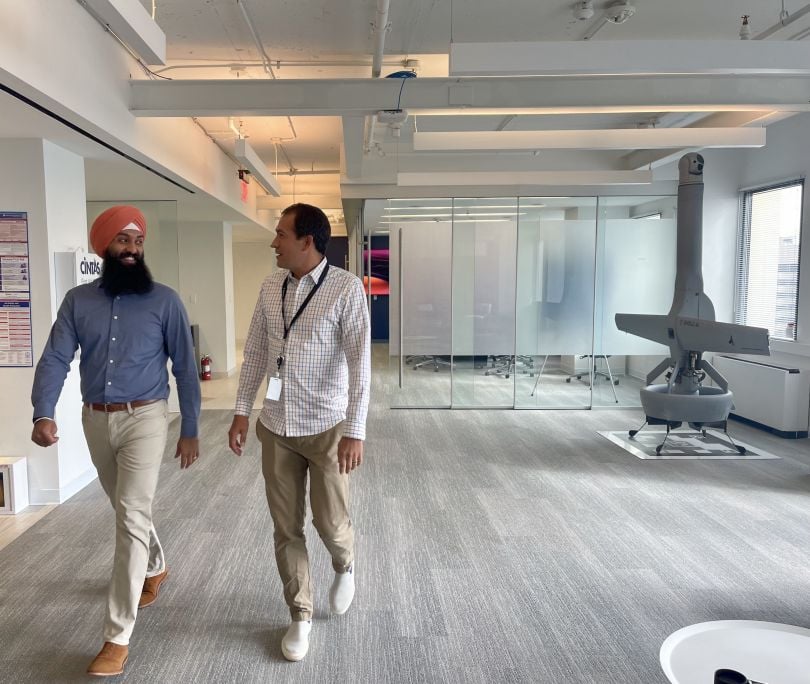
Grewal: Hivemind is the key technology behind our autonomous teaming and wide-area-search capabilities. It is an AI pilot software that delivers intelligent autonomy on the edge for multiagent execution of complex objectives in diverse, degraded environments.
What strategies did you employ to ensure that cross-functional collaboration went smoothly?
Grewal: We started with clearly defined objectives and made sure they were communicated in the right format to the right stakeholders. We reprioritized effort based on new information, clearly accepted or rejected outcomes and pivoted based on lessons learned. We were diligent towards de-risking, so we would have impromptu team meetings to quench embers before they became fires. We also maintained constant and excellent communication throughout this product launch. We held meetings called Sips and Tips to socialize product strategy within the company. Efforts like this allowed us to summarize any key meetings, decisions and developments while linking it all to our strategy and objectives.
“We held meetings called Sips and Tips to socialize product strategy within the company. Efforts like this allowed us to summarize any key developments while linking it all to our strategy and objectives.”
Sorice: The best part of working on V-BAT Teams is the teaming of humans. I’ve worked with members of so many different teams across Hivemind engineering, foundations and testing. We’re all over the country, and the best strategy for cross-functional collaboration is frequent synchronous and asynchronous communication. We rely a lot on asynchronous communication across teams, use written updates and have short-and-sweet standups. When we need to go in-depth, we have longer ad-hoc working meetings.
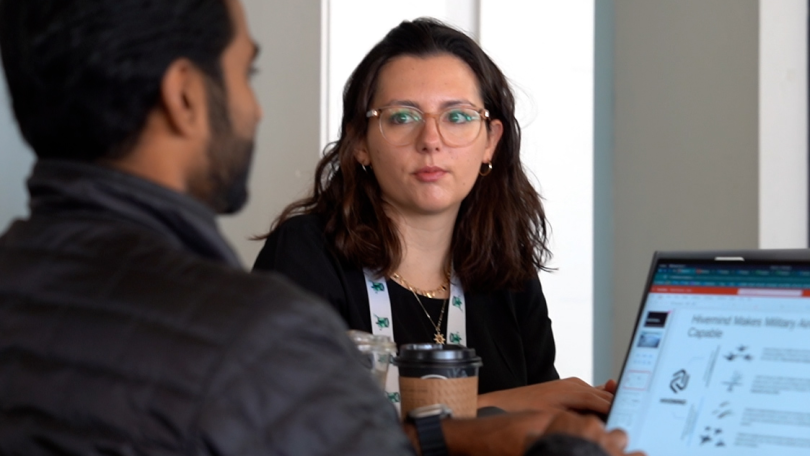
Marchini: Our organization is divided into multiple functional teams that create the Hivemind integrated AI pilot. Representatives from each of the functional teams were part of the project integration team which brought V-BAT Teams to life. We also had assigned systems engineers and test engineers who worked together with me and the functional team members to oversee the development process. It was important for us to define clear requirements, decompose those requirements across the various Hivemind subsystems, and assign appropriate owners at the component and integration levels to ensure performance at the system level.

